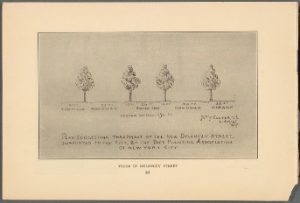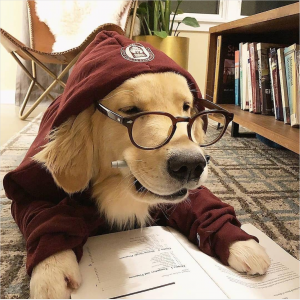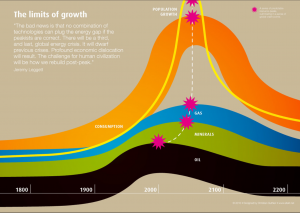Updated 27 October 2021
This information sheet is for teachers who create or compile resources for students, and for curriculum units that develop resources for TAFEs. It covers the following:
- labelling material that has been created by you, your TAFE or an educational body (eg TAFE commission or government education department etc) and
- attributing third party material including:
- attributing material that has been copied or communicated to students under the statutory licences
- attributing Open Education Resources (OER)/ Creative Commons (CC) content and
- attributing material where you have the permission of the copyright owner to use the content.
Labelling material that has been created by you, your TAFE or an educational body (eg TAFE commission, government education department etc)
Labelling is important. By labelling teaching materials correctly, you help ensure not only that copyright owners get paid when their content is copied under the statutory licences, but also that TAFEs are not required to pay under the statutory licences to use content that they own or have permission to use. In 2019, TAFEs paid $2.9 million in copyright fees to Copyright Agency. It is likely that a significant proportion of these fees were paid to copy material owned by TAFE and educational bodies.
Material that has been created by you, your TAFE or an educational body should be clearly labelled. For example:
| © TAFE NSW – Sydney Institute 2020
© TAFE SA, the Government of South Australia, Adelaide College of the Arts, 2020 |
How do you know if material is owned by a TAFE or educational body?
TAFEs and educational bodies own copyright in all material created by their employees as part of their duties. TAFEs and educational bodies also own copyright in material created by a person or organisation who has agreed in writing to assign copyright in the material they create to the TAFE or educational body. For example, a resource developer (an independent contractor), who has been engaged to write a module, may have been required to assign copyright in the module to the TAFE or educational body as part of their contract of engagement.
Licensing your resources under a Creative Commons licence
When you are creating new resources, you should follow best practice and license all TAFE owned material under CC licences where possible and/or practical to ensure that it can be used freely by teachers, parents and students.
For information on the simple process to apply a CC licence, see Applying a Creative Commons Licence.
Material that has been created by you, your TAFE or an educational body should be clearly labelled in order to avoid the possibility of the sector having to pay under the statutory licence to use the content. This is best done with a footer on each page. For example:
| © TAFE NSW – Sydney Institute 2020 © TAFE SA, the Government of South Australia, Adelaide College of the Arts, 2020 |
For examples of best practice labelling/copyright notices, see Recommended Creative Commons Website and Publication Notices.
See also Appendix A for further examples of best practice labelling for TAFE/educational body created materials.
What if you have third party material in your CC resource?
If you are licensing your resource under a CC licence but have also included third party material, you will need to make sure you clearly distinguish and attribute that third party material. For information on how to label third party material in a CC resource, see below ‘Attributing third party material’.
Attributing third party material
Teachers may use third party material either as part of their resources (eg using an image or diagram from a textbook as part of a resource) or as a stand-alone resource for students (eg uploading a documentary/ newspaper article for students to view/read). Regardless of how it is used, it is important to attribute this material to make clear what material is third party material and how it was used so that copyright owners get paid appropriately when their content is copied.
Three main types of third party that may have been copied are:
- material that has been copied or communicated to students under the statutory licences
- OER/CC content and
- material where you have the permission of the copyright owner to use the content.
This section looks at how to attribute each of these types of material.
1. Attributing material that is copied or communicated to students under the Statutory Text and Artistic Works Licence or Statutory Broadcast Licence
Attribution Information
Content that is made available to students under the statutory licences should, wherever possible, include an attribution containing sufficient information to enable Copyright Agency or Screenrights to identify the owner of copyright.
For text and artistic works, you should include as much of the following as possible and/or practical:
- the author and publisher names (it’s not enough to include just the name of the author, the author is often different from the copyright owner)
- title, edition or date of publication
- ISBN or ISSN and
- the full URL (if copying from a website).
If you are copying broadcasts, include:
- the name of the program
- the channel it was copied from
- the date the copy was made and
- the full URL (if copying from a website).
The attribution should be placed wherever practicable (eg below the content, in the footer of each relevant page or as an intro/end credits page).
For more examples on how to attribute text and artistic works and broadcasts under the statutory licences, see Appendix B.
Warning Notice
Although there is no statutory obligation to include a notice stating that copyright material has been copied/communicated in reliance on either of the statutory licences, it is good practice to include the following notice, where this is reasonably practicable, on text and artistic works and broadcasts that have been copied under the statutory licences:
|
[WARNING] [Some of] [T]his material has been copied [and communicated to you] in accordance with the statutory licence in section 113P of the Copyright Act. Any further reproduction or communication of this material by you may be the subject of copyright protection under the Act. Do not remove this notice. |
This is in order to limit the potential liability of the TAFE or educational body in the event that a student uses the content in a way that may infringe copyright. The same notice applies regardless of whether you are copying under the Statutory Text and Artistic Works Licence or the Statutory Broadcast Licence.
A practical way of including this notice to electronic material is to insert a link to the notice from the attribution information, eg:
| Copied under the statutory licence in s 113P of the Copyright Act
Media Watch, ABC, 1 August 2020 [Link to warning notice] |
To do this you should upload a copy of the notice onto a specific spot on your Digital Teaching Environment (DTE) and link to that when required.
Where it is not possible and/or practical to include a link to the notice from the attribution information, the notice could be displayed (flashed) on the screen as the user logs into the password protected share drive or intranet or content or learning management system or cloud storage. If using this approach, you should ensure the notice makes it clear that it applies to only some of the material on the repository.
If you are presenting a PowerPoint that includes material copied under the statutory licences, you could include this notice in an introductory or closing slide.
2. Attributing OER/CC content
OER are resources that are free to access, use, modify or adapt and share. Ideally they are licensed under the Creative Commons CC-BY (Attribution) or CC-BY-SA (Share Alike) licence. See our OER information sheet for information on how to use, and where to find OER resources. NCU encourages teachers to use OER resources wherever possible and/or practical.
CC licences require that users of the material attribute the creator. This means you always have to acknowledge the creator of the CC material you are using, as well as provide any relevant copyright information. A good way of doing this is using TASL:
- Title
- Author – include a hyperlink to author’s page if applicable
- Source – if the resource was obtained online, an easy way of doing this is to hyperlink the title to the URL of the original source
- Licence – include a hyperlink to the licence terms
For example:
| Creative Commons image found on Flickr
“Creative Commons 10th Birthday Celebration San Francisco” by tvol is licensed under CC-BY 2.0 |
See How to attribute Creative Commons licensed materials for more detailed information on attributing CC licensed materials and how to use the Open Attribute Tool.
What if you are using some Creative Commons licensed content, and some third party content that is not licensed under Creative Commons?
You must ensure that any third party content that is not CC licensed is clearly identified. This can be done either by including a notice directly under the third party content, or by giving a general notice that includes all third party non-CC content. For example:
| ‘J Smith 2020, Exploring Africa © National Tourism Unit, NSW, all rights reserved, used with permission.’
or ‘All material on this website, except as identified below, is licensed under the Creative Commons Attribution 4.0 International Licence. To view a copy of this licence, visit http://creativecommons.org/licenses/by/4.0/.’ Material that is not licensed under a Creative Commons licence is: · Commonwealth Coat of Arms · Material protected by a trade mark · Logo · Photographs on pages 4, 5 and 6 · Poem on page 2 · [Etc] All content not licensed under a Creative Commons licence is all rights reserved, and you must request permission from the copyright owner to use this material.’ |
What if I am using clip art?
If you are using clip art, always check the terms and conditions of use, and try to use openly licensed clip art such as from the Open Clip Art Library at CLKER.com.
It is often not practical to attribute each individual image, so include the notice in the footer of the page on which the images appear. For example:
Clip art sourced from CLKER.com
3. Attributing third party material where you have permission from the copyright owner to use the content
If you have permission from the copyright owner to reproduce the material you should check with them how they would like to be attributed. The permission should allow the TAFE or educational body to reproduce the material, and for the material to be subsequently copied, and, if appropriate, communicated, by the TAFE or educational body for its educational purposes. Ideally, you should seek permission to make it available under a CC-BY (Attribution) or CC-BY-SA (Share Alike) licence and attribute it as such.
If the copyright owner is not willing to licence the content under a CC licence, you should ensure that the permission that is provided clearly permits the TAFE or educational body to reproduce and communicate the material for educational purposes. Ideally, you should seek a permission that allows the TAFE/educational body to not only reproduce the material in the resource being created, but also to make further copies of the material, and to communicate the material to students, for educational purposes. You should clearly indicate next to the material or in the footer of each page that you have this permission. For example:
| Reproduced and made available for copying and communication by [insert name of TAFE or educational body] for [its] educational purposes with the permission of [name copyright owner]. |
If the copyright owner will only agree to the material being reproduced for inclusion in the resource you are creating (ie the permission does not extend to further copies or communications of the material ) you should make this clear. For example:
| Extract from Basic Mathematics, Taylor C, p 56-57, reproduced with the permission of [name of copyright owner – this will usually be the publisher] (for use in this publication only). |
For further information, contact the NCU.
4. Labelling and attributing material under a CC0 Licence or in the public domain
CC0
Where materials are licensed under a CC0 Licence, the copyright owner has waived all of his or her rights to the work under copyright law. CC0 enables copyright holders to opt out of copyright protections and effectively put their work into the public domain. While there is technically no requirement to attribute material under a CC0 licence, it is best practice to still clearly indicate the source of the image (eg Pexels, Google Images), insert the CC0 Logo and link to the CC0 Licence deed on the Creative Commons website.
For example:

‘Black Short Coat Medium Dog on Floor’ Image from Pexels, CC0
![]()
Public Domain
When copyright expires, the work enters the public domain and can be used freely by anyone. However, whether something is in the public domain can mean different things depending on the jurisdiction (ie the material may be in the public domain in the USA but not in Australia). In Australia, copyright in a literary, artistic, musical or dramatic work expires 70 years after the death of the author.
For information about duration of copyright see Copyright Basics.
It is still best practice to clearly label materials that are in the public domain.
For example:

‘Trees in Delancey Street’ Image from the New York Public Library Digital Collections, Public Domain
![]()
Appendix
Appendix A – Labelling TAFE/educational body owned material
Example 1: Labelling TAFE/educational body owned material licensed under a CC licence.
Note this could be placed below the material or as an end credit for videos and as a footer on every page for text based material:
Basic Soldering Video TAFE NSW is licensed under a Creative Commons Attribution-NonCommercial-ShareAlike 3.0 Licence.
Attribution: © TAFE NSW – Mt Druitt College of TAFE (unless indicated otherwise), Basic Soldering Video TAFE NSW
Example 2: Attributing TAFE/educational body owned material which also contains third party material
a) Notice directly under the third party content
‘P,Taylor, 2020,‘Native Plants of WA’, © Insite Publishers. Used with permission.’
b) General notice that includes all third party, non-Creative Commons licensed content
‘All material on this website, except as identified below, is licensed under the Creative Commons Attribution 4.0 International Licence. To view a copy of this licence, visit http://creativecommons.org/licenses/by/4.0/.’
Material that is not licensed under a Creative Commons licence is:
-
- Photographs on pages 4-6
- Poem on page 2
- Video footage
You must request permission from the copyright owner to use any of the material not licensed under Creative Commons.
Appendix B – Attributing examples when using third party material
Example 1: Print material used under the Statutory Text and Artistic Works Licence
“Copied under s 113P [insert author, title, publisher, edition or date of publication, ISBN/ISSN]”
Copied under s 113P J. B. Fitzpatrick, Bob Aus, Merv Curran, New Senior Mathematics, Pearson Australia, 25/06/2013, 9781442566187
Example 2: Online material used under the Statutory Text and Artistic Works Licence

Copied Under s 113P, https://www.instagram.com/p/ByqiTzTpto6/?igshid=11p4m7395ib3q, The Printed Paw, accessed 18 May 2020
[Link to warning notice]
Example 3: Material used under the Statutory Broadcast Licence
Copied under the statutory licence in s 113P of the Copyright Act
Australia Remembers: ANZAC Day 2020, ABC, 28 April 2020
[Link to warning notice]
Example 4: Creative Commons Licensed Material
a) Used as a resource on its own
Labelling Third Party Content in Creative Commons Licensed Material, National Copyright Unit, Copyright Advisory Groups (Schools and TAFEs) is licensed under a under a Creative Commons Attribution 4.0 International Licence.
b) Used in a resource you created
Chart on Population Growth found on Flickr:

Limits of Growth by allispossible.co.uk is licensed under CC BY-SA 2.0
Example 5: Material used with permission from the copyright owner
a) Used as a resource on its own/in a resource you created
Reproduced and made available for copying and communication by TAFE NSW for its educational purposes with the permission of J Smith.
b) If permission is limited to use the specific resource (ie no further copying or communicating is permitted)
Reproduced and made available for copying and communication by TAFE SA, the Government of South Australia for its educational purposes with the permission of J Smith (for use in this publication only).

